Date: Tuesday 8 September 2020
Time: 12:00pm – 1:00pm (AEST)
Cost: Free for TFFPN members | $20 Non-members
About:
The Network, in collaboration with Rural Business Tasmania is pleased to present a webinar on the Forestry Contractors Resilience Program, with the focus of assisting businesses to withstand uncertain times and build resiliency for the future.
Stephen Hansen will be on board to talk you through the process of how to apply, checking your eligibility and what you can achieve with business coaching. Separate to the Forestry Program, Steve will update you on the diverse services that Rural Business Tasmania has to offer and how we can help you build sustainability within your business.
Speaker:
Stephen Hansen
 Stephen is a Financial Counsellor with Rural Business Tasmania, with over 30 years’ experience in banking, and also holds qualifications in business management and accounting.
Stephen is a Financial Counsellor with Rural Business Tasmania, with over 30 years’ experience in banking, and also holds qualifications in business management and accounting.
Working with Stephen can help you take stock of where your business is at, identify where you would like to take your business and help develop a plan of attack. Stephen can provide ongoing assistance and help you stay on track to achieve your goals.
About the Forestry Contractors Resilience Program:
Tasmania’s forestry contractors can now apply for funding to improve their business practices under the $500, 000 Forestry Contractors Resilience Program being delivered through Rural Business Tasmania.
Under the program Tasmanian forestry harvest and haulage contractors have the opportunity to work with specialists in business and financial management to identify future opportunities and build stability and resilience into their operation.
Eligible applicants will receive up to five hours of professional business coaching and may also be eligible for up to $15,000 to deliver agreed business improvements.
1. Carbon + Climate
Climate Change and Carbon Policy Assessment Report
Completed November 2020, this report details opportunities for expansion of Tasmania’s forestry sector grouped around key themes of:
-
- adapting to climate change;
- improving climate policy and carbon markets;
- exploring bioenergy opportunities:
- natural capital and ecosystem services.
2. Workforce, Skills + Training
Culture, Training and Skills Assessment Report
Completed November 2020, this report provides a strategic assessment of culture, skills and training for the Hub and provides a series of recommendations regarding opportunities and barriers to expansion of the Tasmanian forestry sector.
3. Resource + Land Access
Access to Land and Land Use Policy for Plantation Forest Investment Assessment Report
Completed September 2020, this report provides a strategic assessment of the factors affecting forest growing and processing sectors in the context of land access and land use policy for Tasmania. Key priorities for the Hub were identified as:
-
- Maintaining and expanding the current plantation footprint to the extent that it is
economically, commercially and socially feasible. - Identifying and driving smaller scale expansion opportunities in the context of
both commercial and additional (environmental services and agricultural
productivity) benefits.
- Maintaining and expanding the current plantation footprint to the extent that it is
Completed in July 2023, the analysis undertaken for this report has demonstrated that there are opportunities for Government funded incentives to support short to medium actions which can deliver up to 650,000 cubic metres per year of additional sawlog production by the mid-2030s, which otherwise would not be commercially viable.
Proposed recommendations to support the silvicultural intervention programs outlined in this report include:
1. Emissions Reduction Fund rules:
a) Ensure that E. nitens and E.globulus are recognised as eligible long rotation species in Tasmania and Victoria.
b) Ensure that the additionality exclusion for government program funded projects is relaxed for long rotation conversion projects.
c) Ensure that actively managed regrowth native forests are eligible for ERF participation where additional and tangible forest and ecosystem health benefits can be demonstrated.
2. Long rotation plantation forestry fund:
Establish a dedicated long rotation conversion fund of up to $2.5 million annually for ten years, for eligible plantations with agreed criteria addressing species, productivity, scale and proximity to processing facilities and infrastructure.
3. Forest health restoration fund:
Establish a forest health restoration fund of up to $4 million annually for ten years to support active silvicultural management of regrowth native forests on private land where additional and tangible forest and ecosystem health benefits can be demonstrated and the activity would not be viable without financial support. Criteria for participation to be determined through the application of an appropriate natural capital accounting method and monitoring.
This paper is supported by a detailed case study for Tasmania detailed below:
CASE STUDY: Silvicultural interventions to improve sawlog production from Tasmanian forests
This Tasmanian case study has been prepared as a supplementary report for the project Building the case for intervention to support increased sawlog production from Australia’s forests. It supports the three recommendations above along with detailing a fourth recommendation of:
4. Specialty timbers silviculture fund:
Establish a specialty timbers silviculture fund of up to $600,000 over ten years, to support fast-tracking requisite silvicultural interventions for blackwood forests and to trial commercial thinning.
4. Supply Chain + Infrastructure
Supply Chain and Infrastructure Assessment Report
Completed in October 2020, this report details the current state of forestry supply chains and infrastructure, the opportunities and barriers for forestry and the constraints effecting productivity. Recommendations are grouped into four categories:
-
- Enhance market access and efficiency
- Explore forest products value-add and differentiation opportunities
- Improve supply chain and infrastructure visibility
- Improve workforce development, skills and career pathways
Forestry Infrastructure Opportunities in Southern Tasmania Final Report
Completed in July 2021, this report is a detailed assessment of the infrastructure priorities for the development of the southern Tasmanian forestry industry and summarises infrastructure opportunities for port, rail and road for the:
- Short Term (1-5 years)
- Medium Term (5-15 years)
- Long Term (15-30 years)
Hub Demand Study – Summary Report (June 2022)
Completed in June 2022, this demand study informs the forests and forest product sector on opportunities to make investments for sustainable growth through
to 2050 and beyond. It details a positive demand outlook across most of Tasmania’s wood product groups underpinned by:
- The core attributes of the Tasmanian timber products;
- Forecast growth in Australia’s population and gross domestic product through to 2050;
- Supply scarcity for log production and wood products produced in Tasmania and other
states – most notably native forest hardwood timbers, but also plantation wood managed for
structural timber and engineered wood product applications; and - Policy drivers at both the national and state level, supporting the use and procurement of
‘renewable’ wood products, from sustainably managed forests.











